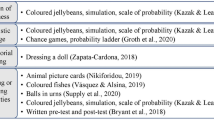Abstract
Many mathematics educators have found thatprospective elementary school teachers' beliefsinterfere with their learning of mathematics.Often teacher educators consider these beliefsto be wrong or naïve and seek to challengethem so prospective teachers will reject themfor more generative beliefs. Because of theresilience of prospective teachers' beliefs inresponse to these challenges, teacher educatorscould consider alternative ways of thinkingabout and addressing beliefs, particularly thepotential of building on rather than tearingdown pre-existing beliefs. Data from anearly-field experience linked to amathematics-for-teachers course provideevidence that when prospective teachers workintimately with children, in this case tryingto teach 10-year-olds about fractions, theexperience has the intensity from which beliefscan grow. Most of the prospective teachers inthe study were surprised that mathematicsteaching was more difficult than they hadanticipated. They began to consider theimportance of providing children time to thinkwhen solving mathematical problems. The changedescribed in the study is incremental ratherthan monumental, suggesting that building uponprospective teachers' existing beliefs will bea gradual process.
Similar content being viewed by others
REFERENCES
Ambrose, R. (2002, April). They all hate math: Getting beyond our stereotypes of prospective elementary school teachers. Paper presented at the annual meeting of the American Educational Research Association, New Orleans.
Ball, D. (1990). Prospective elementary and secondary teachers' understanding of division. Journal for Research in Mathematics Education, 21, 132–144.
Ball, D. (2000). Bridging practices: Intertwining content and pedagogy in teaching and learning to teach. Journal of Teacher Education, 51, 241–247.
Carpenter, T.P., Fennema, E., Franke, M., Levi, L. & Empson, S. (1999). Children's mathematics: Cognitively guided instruction. Portsmouth, NH: Heinemann.
Document/index.htm
Feiman-Nemser, S. & Buchmann, M. (1986). The first year of teacher preparation: Transition to pedagogical thinking. Journal of Curriculum Studies, 18, 239–256.
Feiman-Nemser, S., McDiarmid, G.W., Melnick, S. & Parker, M. (1988). Changing beginning teachers' conceptions: A study of an introductory teacher education course. East Lansing: National Center for Research on Teacher Education and Department of Teacher Education, Michigan State University.
Fenstermacher, G. (1979). A philosophical consideration of recent research on teacher education. In L.S. Shulman (Ed.), Review of research in education (Vol. 6, pp. 157–185). Itasca, IL: F.E. Peacock.
Gellert, U. (2000). Mathematics instruction in safe space: Prospective elementary teachers' views of mathematics education. Journal of Mathematics Teacher Education, 3, 251–270.
Glaser, B. (1998). Doing grounded theory: Issues and discussions. Mill Valley, CA: Sociology Press.
Goldstein, L. (1999). The relational zone: The role of caring relationships in the co-construction of mind. American Educational Research Journal, 36, 647–673.
Goodman, J. (1988). Constructing a practical philosophy of teaching: A study of prospective teachers' professional perspectives. Teaching and Teacher Education, 4, 121–137.
Green, T.F. (1971). The activities of teaching. New York: McGraw-Hill.
Hargreaves, A. (1994). Changing teachers, changing times. London: Cassell.
Hollingsworth, S. (1989). Prior beliefs and cognitive change in learning to teach. American Educational Research Journal, 26, 160–189.
Hollingsworth, S. (1992). Learning to teach through collaborative conversation: A feminist approach. American Educational Research Journal, 29, 373–404.
Howes, E.V. (2002). Learning to teach science for all in the elementary grades: What do preservice teachers bring? Journal of Research in Science teaching, 39, 845–869.
Ma, L. (1999). Knowing and teaching elementary mathematics: Teachers' understanding of fundamental mathematics in China and the United States. Mahwah, NJ: Erlbaum.
Mack, N. (1995). Confounding whole-number and fraction concepts when building on informal knowledge. Journal for Research in Mathematics Education, 26, 422–443.
Mathematical Sciences Education Board (2001). Knowing and learning mathematics for teaching: Proceedings of a workshop. Washington, DC: National Academy Press.
McDiarmid, G.W., Ball, D.L. & Anderson, C.W. (1989). Why staying one chapter ahead doesn't really work: Subject specific pedagogy. In M.C. Reynolds (Ed.), Knowledge base for the beginning teacher (pp. 193–206). Oxford: Pergamon Press.
McLaughlin, H.J. (1991). Reconciling care and control: Authority in classroom relationships. Journal of Teacher Education, 42(3), 182–195.
Nespor, J. (1987). The role of beliefs in the practice of teaching. Journal of Curriculum Studies, 19, 317–328.
Pajares, M.F. (1992). Teachers' beliefs and educational research: Cleaning up a messy construct. Review of Educational Research, 62, 307–332.
Richardson, V. (1996). The role of attitudes and beliefs in learning to teach. In J. Sikula (Ed.), Handbook of research on teacher education (pp. 102–119). New York: Macmillan.
Rokeach, M. (1968). Beliefs, attitudes, and values: A theory of organization and change. San Francisco: Jossey-Bass.
Simon, M., Tzur, R., Heinz, K., Kinzel, M. & Smith, M.S. (2000). Characterizing a perspective underlying the practice of mathematics teachers in transition. Journal for Research in Mathematics Education, 31, 579–601.
Stofflett, R. & Stoddart, T. (1992, April). Patterns of assimilation and accommodation in traditional and conceptual change teacher education course. Paper presented at the Annual Meeting of the American Educational Research Association, San Francisco.
Weinstein, C.S. (1989). Teacher education students' preconceptions of teaching. Journal of Teacher Education, 4, 31–40.
Weinstein, C.S. (1990). Prospective elementary teachers' beliefs about teaching: Implications for teacher education. Teaching and Teacher Education, 6, 279–290.
Wideen, M., Mayer-Smith, J. & Moon, B. (1998). A critical analysis of the research on learning to teach: Making the case for an ecological perspective on inquiry. Review of Educational Research, 68(2), 130–178.
Worthy, J. & Patterson, E. (2001). “I can't wait to see Carlos!”: Situated learning and personal relationships with students. Journal of Literacy Research, 33(2), 303–344.
Author information
Authors and Affiliations
Rights and permissions
About this article
Cite this article
Ambrose, R. Initiating Change in Prospective Elementary School Teachers' Orientations to Mathematics Teaching by Building on Beliefs. Journal of Mathematics Teacher Education 7, 91–119 (2004). https://doi.org/10.1023/B:JMTE.0000021879.74957.63
Issue Date:
DOI: https://doi.org/10.1023/B:JMTE.0000021879.74957.63



